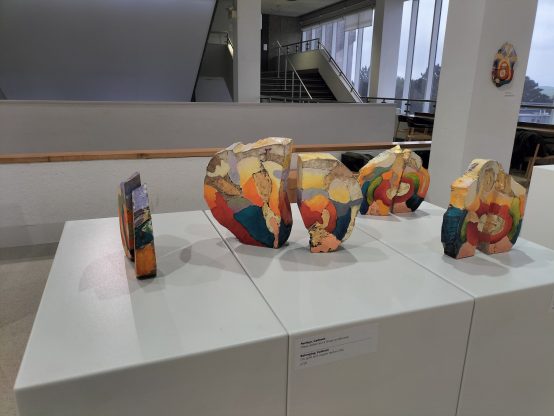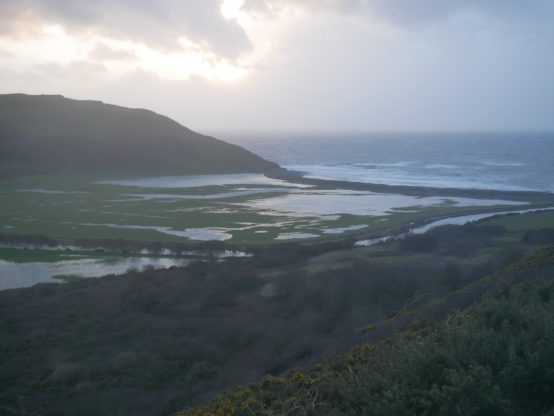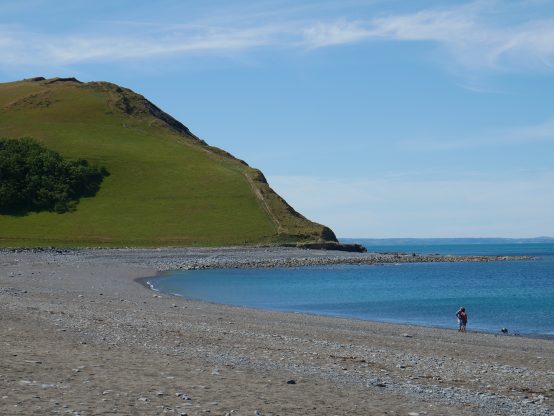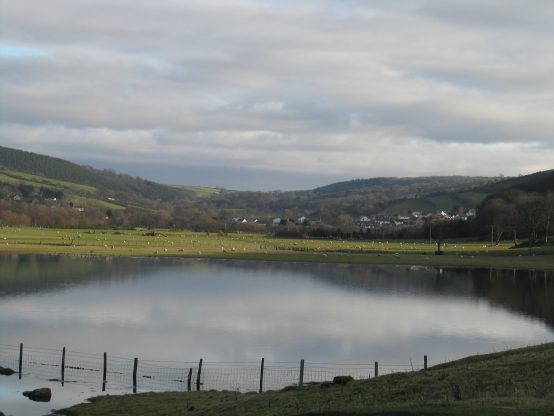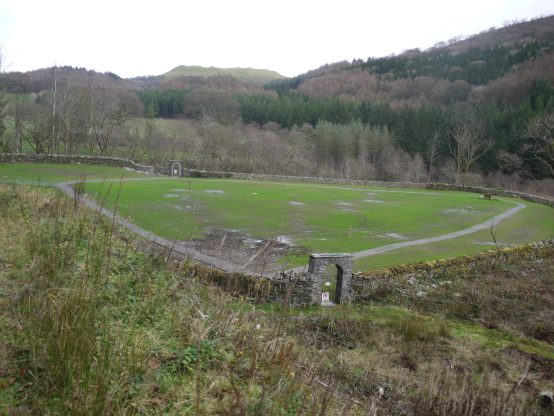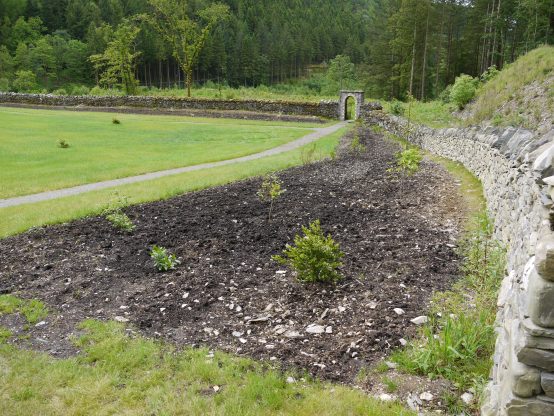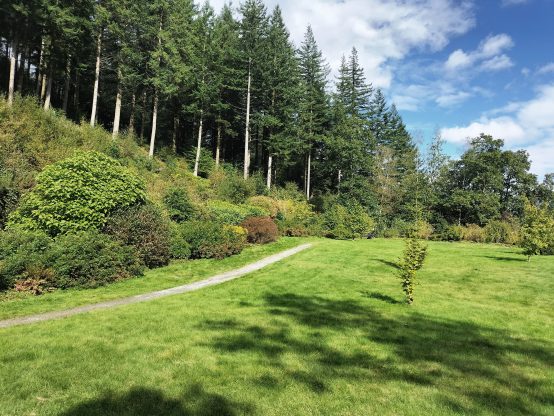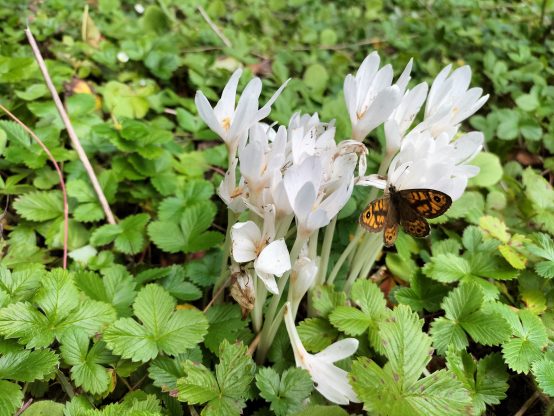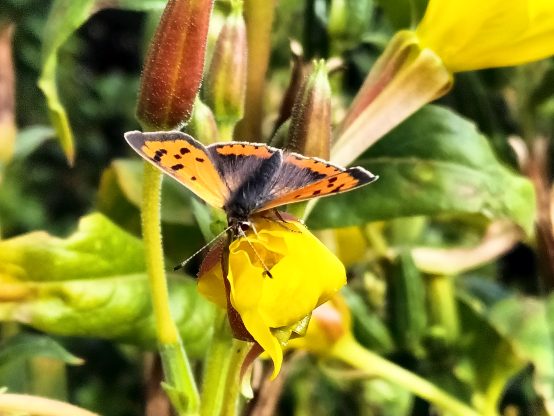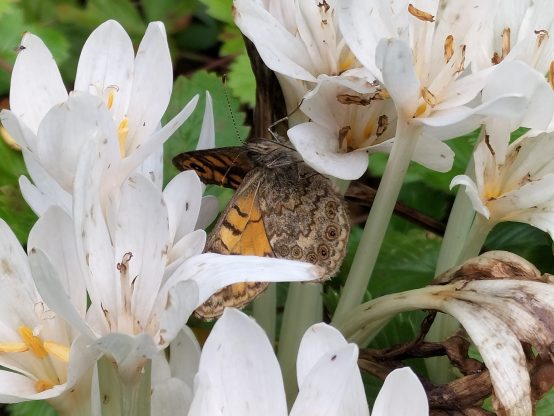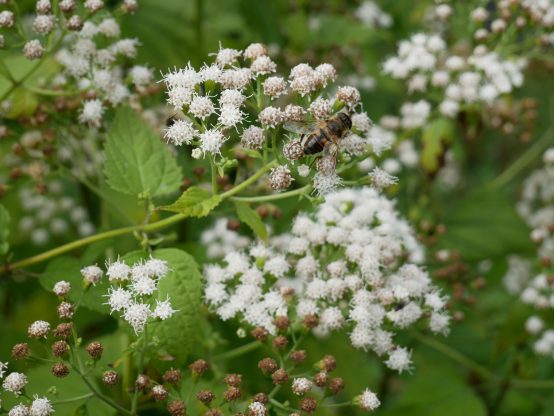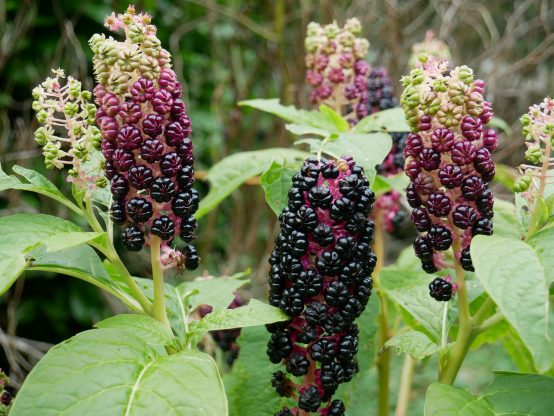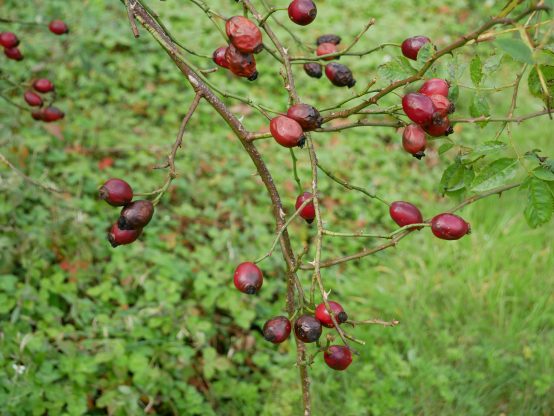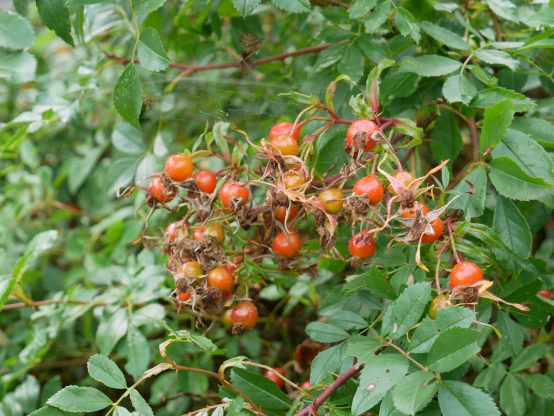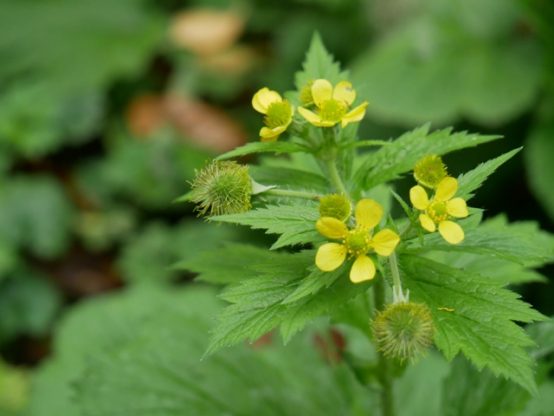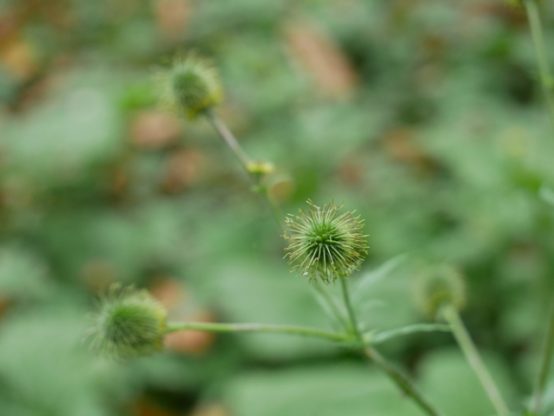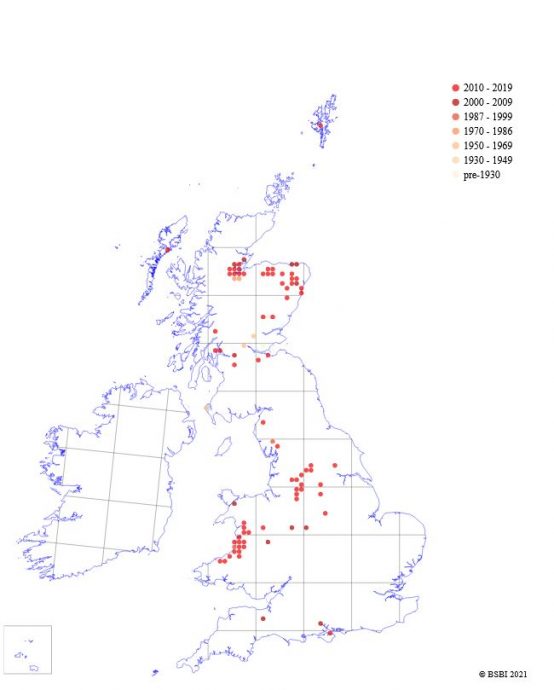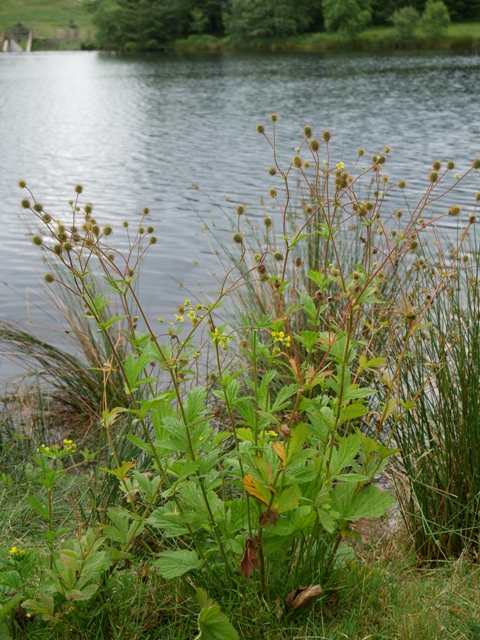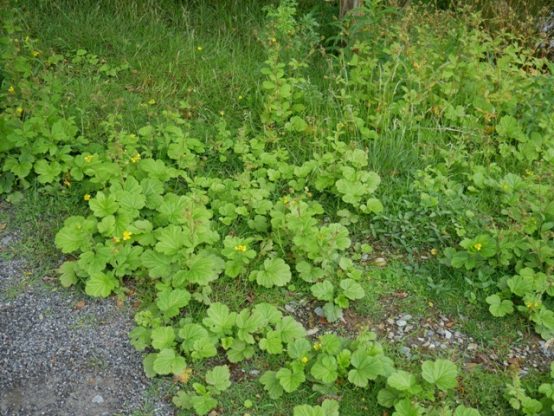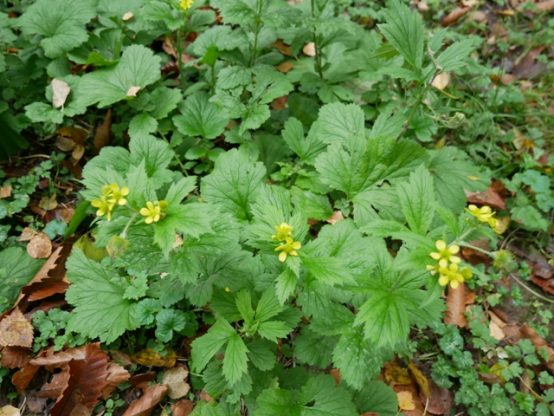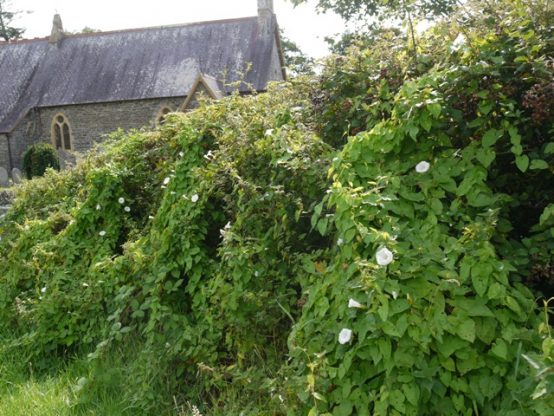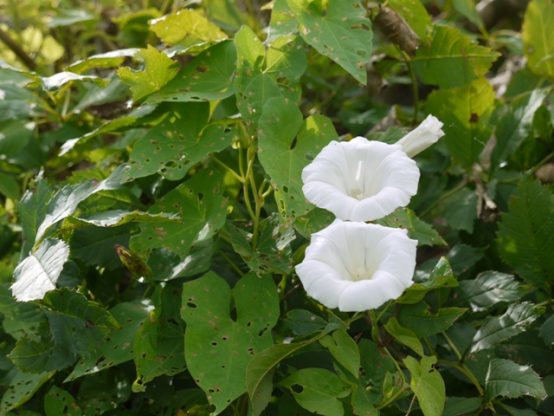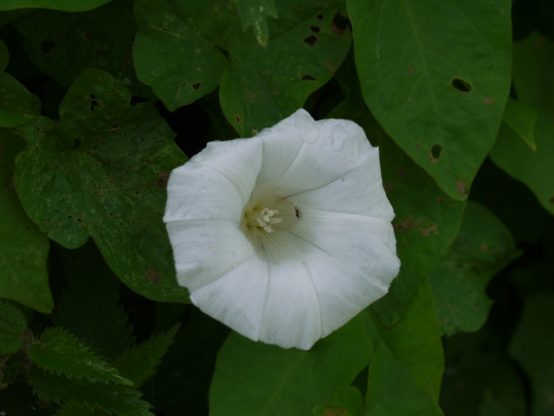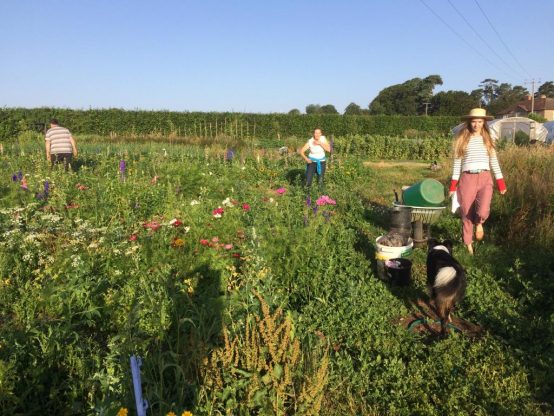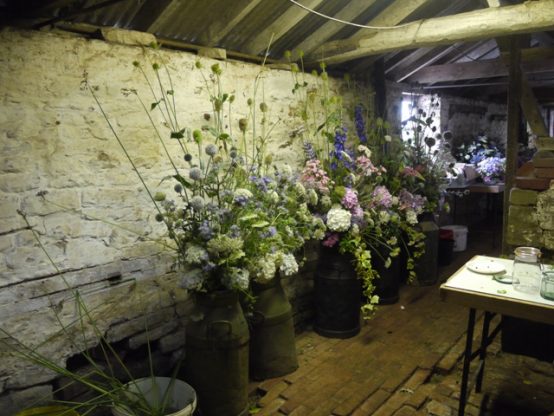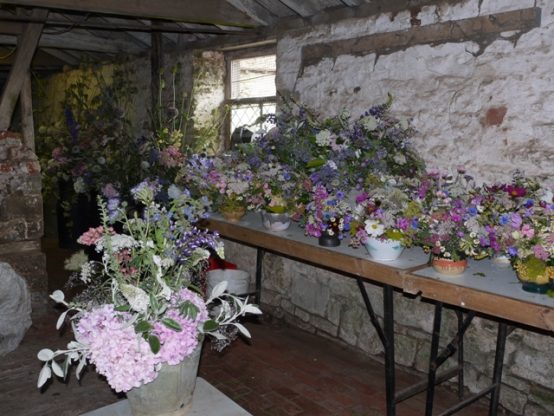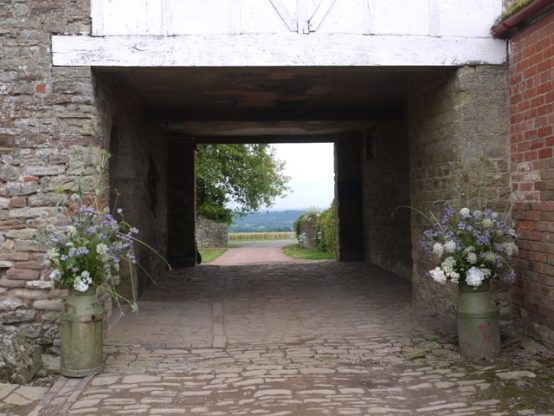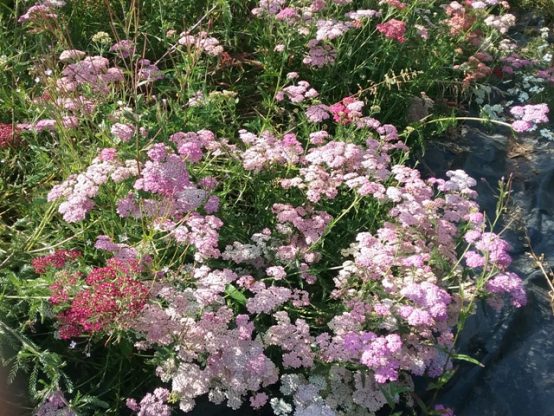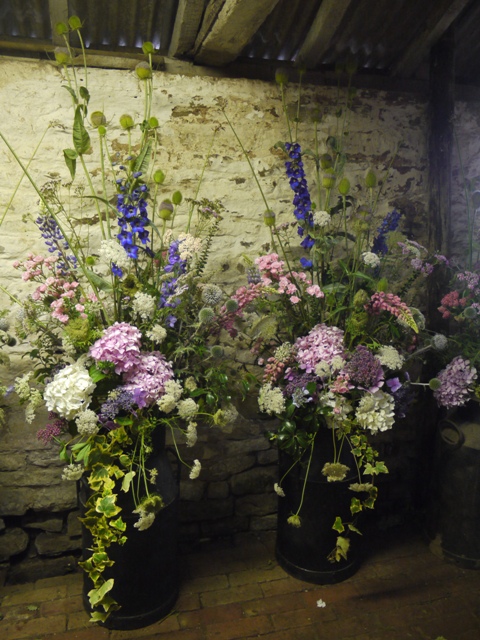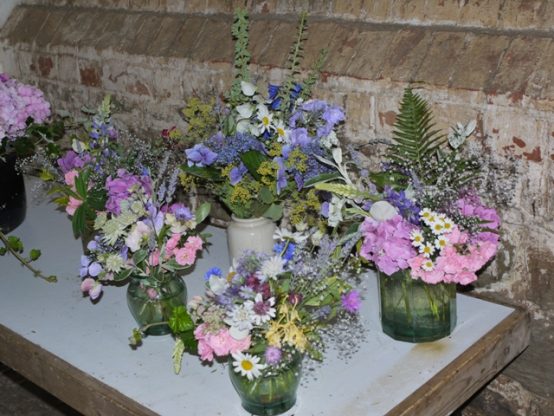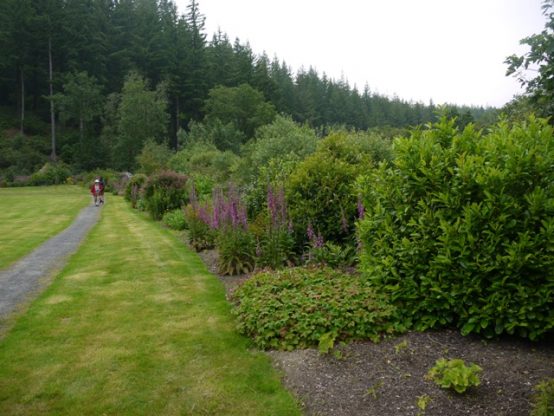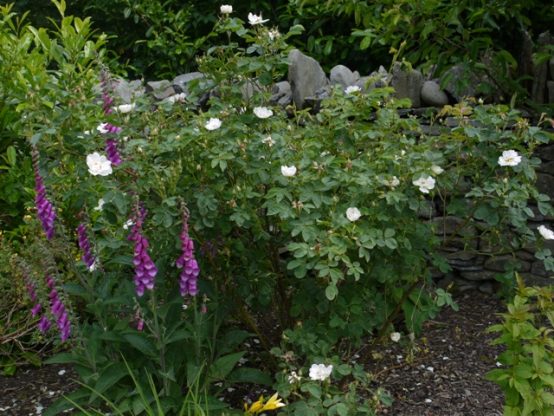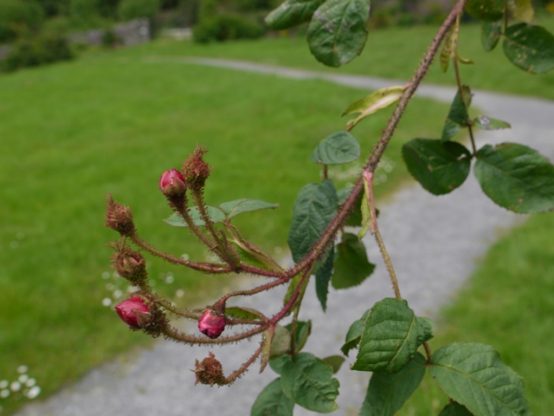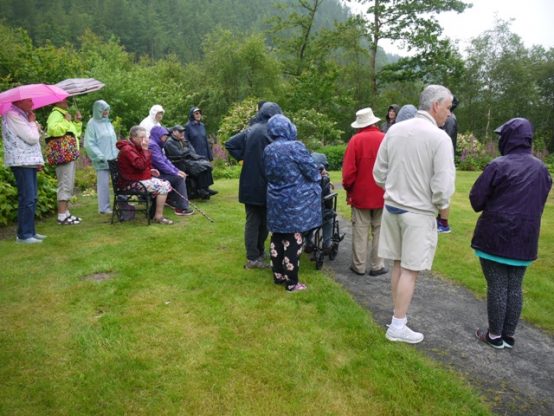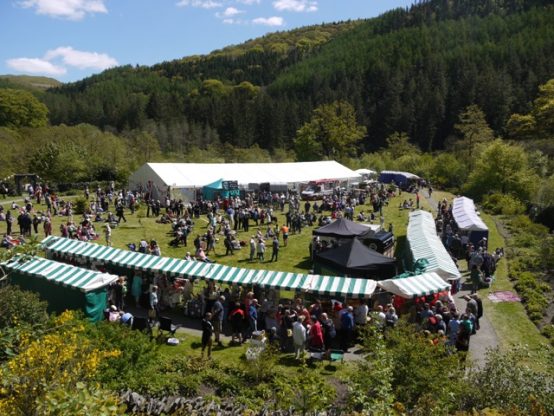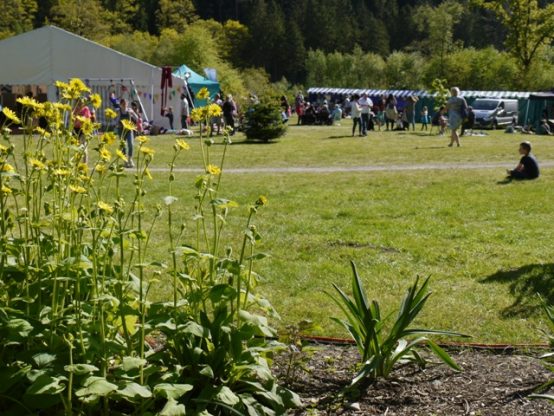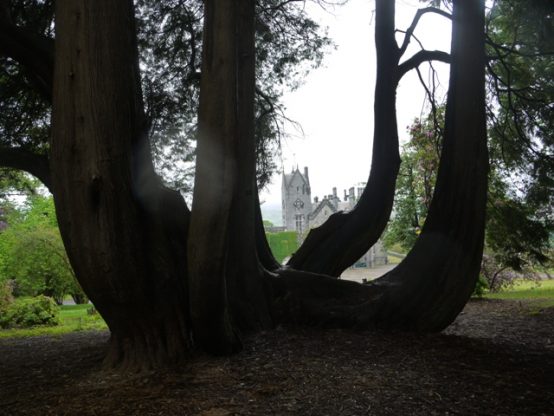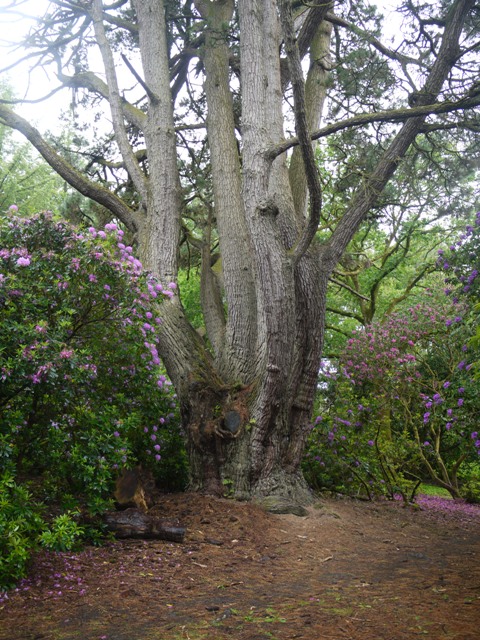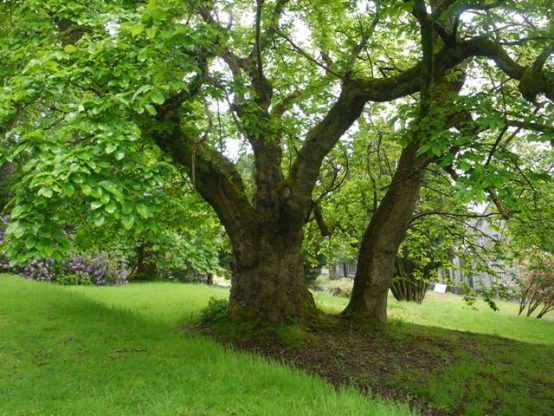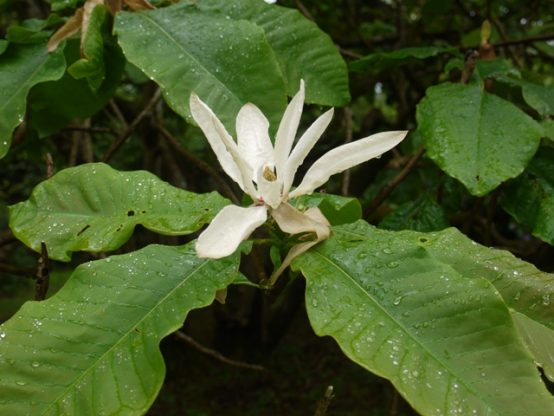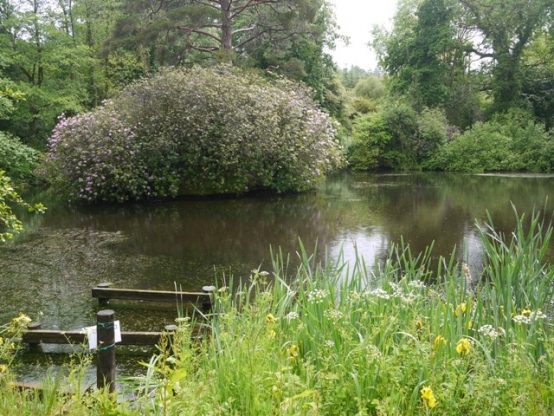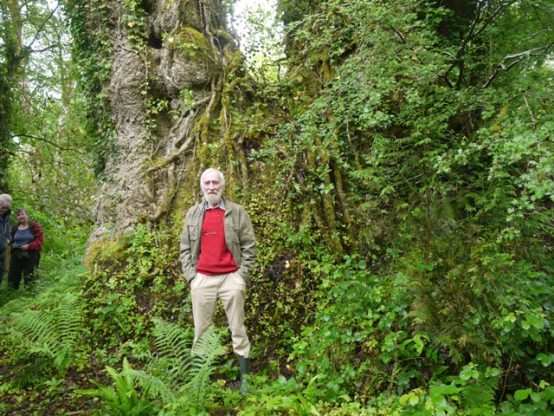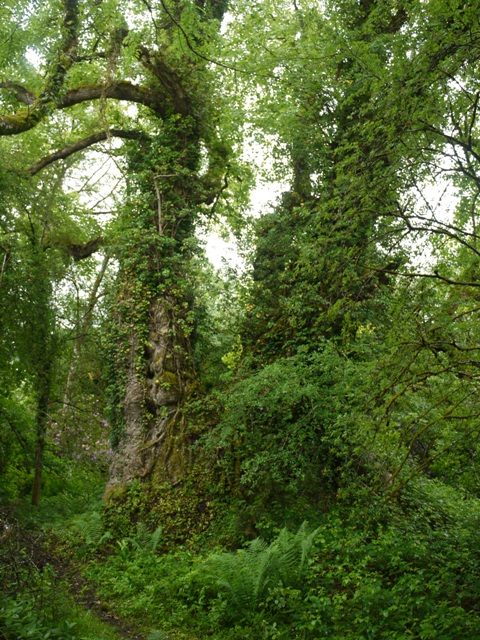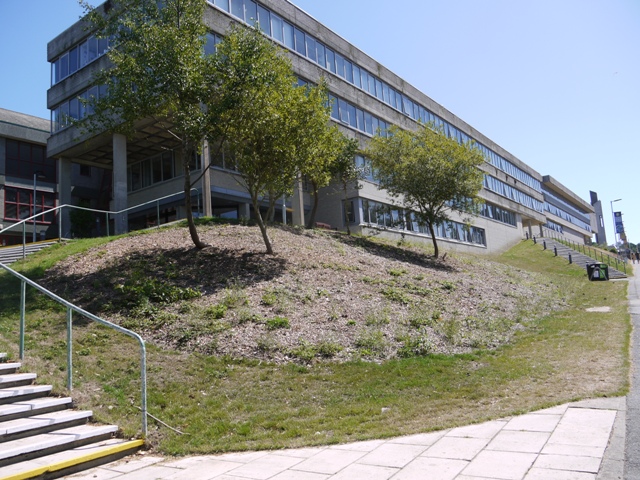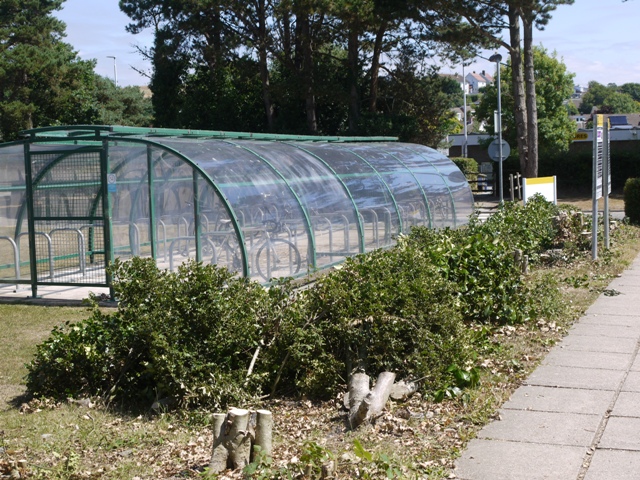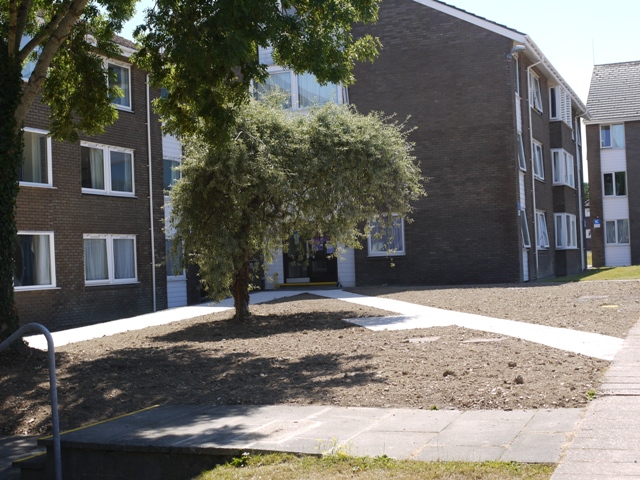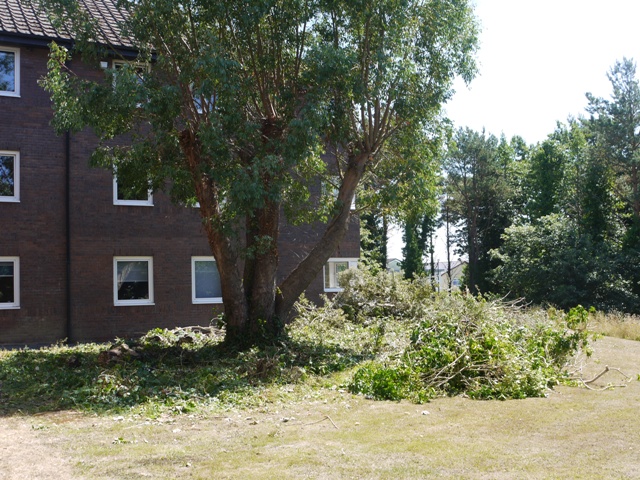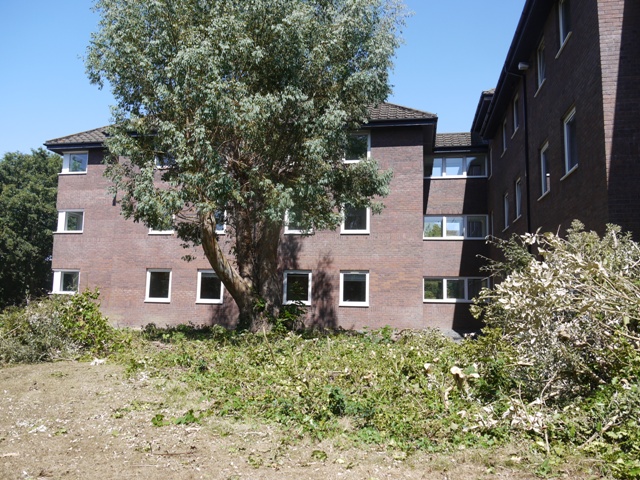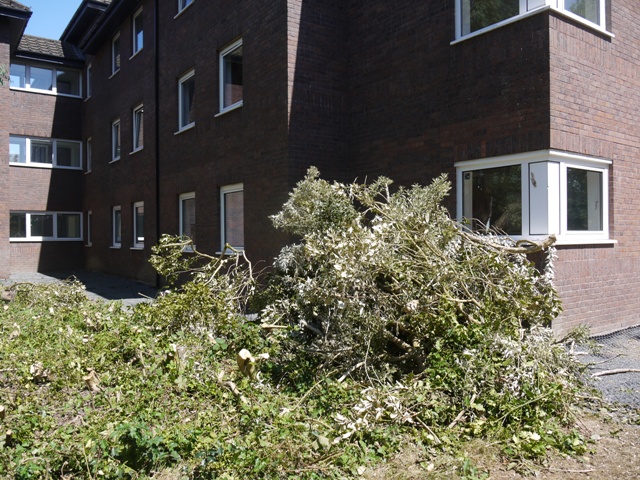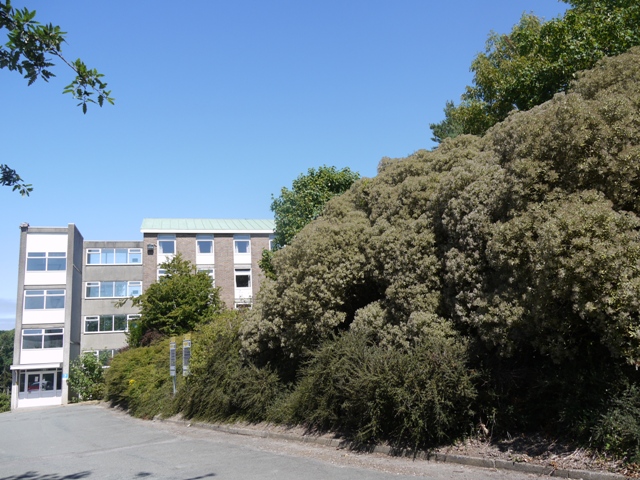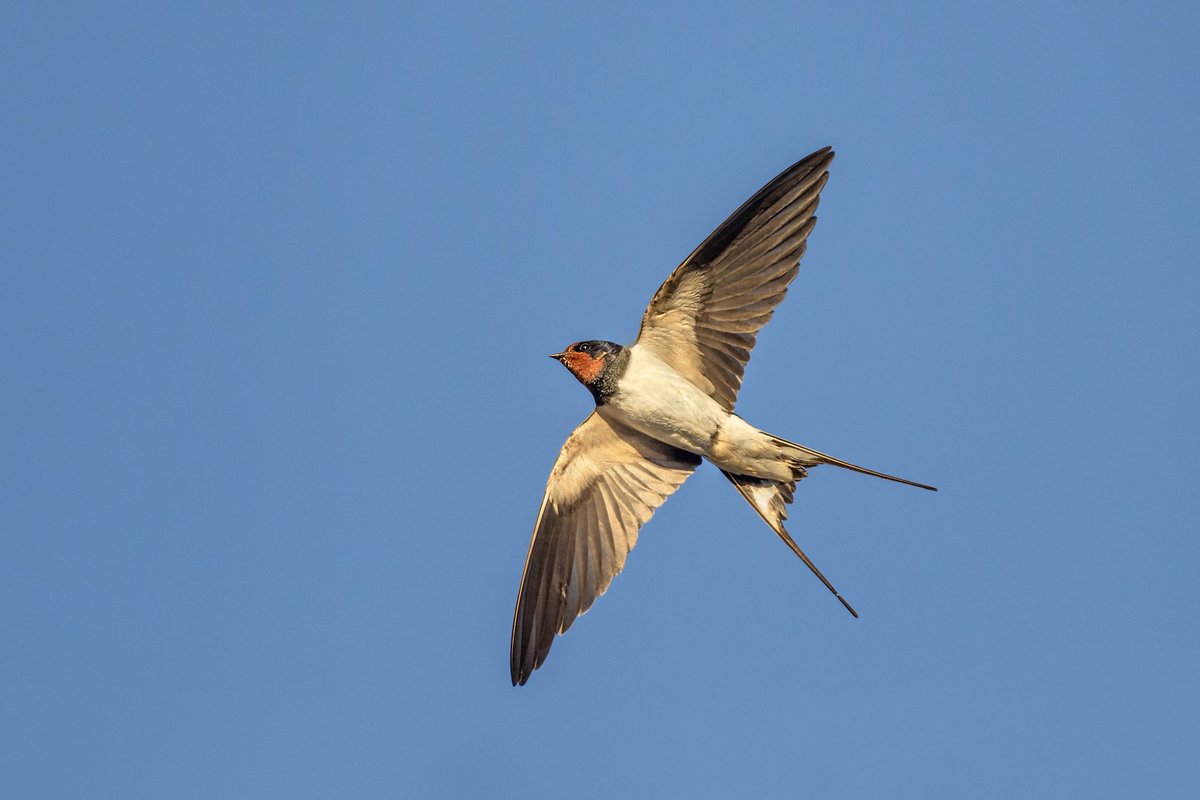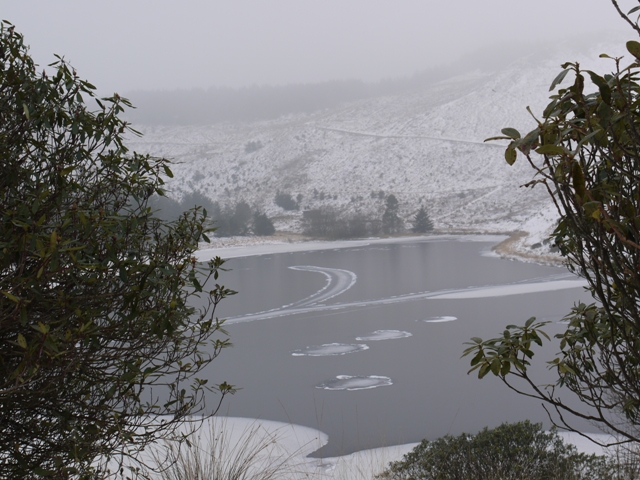by The Curious Scribbler
The School of Art has selected gardens and gardening as the theme of this year’s long running summer exhibition. The exhibition forms a part of the undergraduate course in which students act as curators – selecting the works, mounting, framing and displaying them in the gallery. For this they sifted through the substantial collections belonging to the School of Art, bringing various long-unseen artworks into the light. The result is an intriguing collection on the general theme, including paintings, etchings, prints,photographs, decoupage and even ceramics spanning a time frame of 150 years. There is also a cabinet to explore.
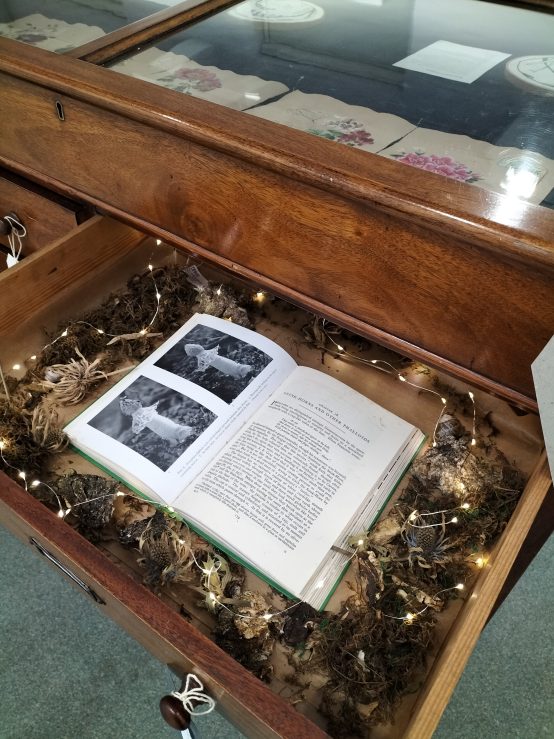
Each drawer in this cabinet was compiled by an individual student. Here the page is open at Phallus impudicus, the Stinkhorn fungus.
My eye was first caught by two exquisite botanical illustrations by Mildred Eldridge, wife of the poet R.S.Thomas. The first is of Sanguisorba canadensis growing in 1959 at Eglwysfach, possibly in their garden, or in the collections of Mr Mappin at Ynyshir Hall.
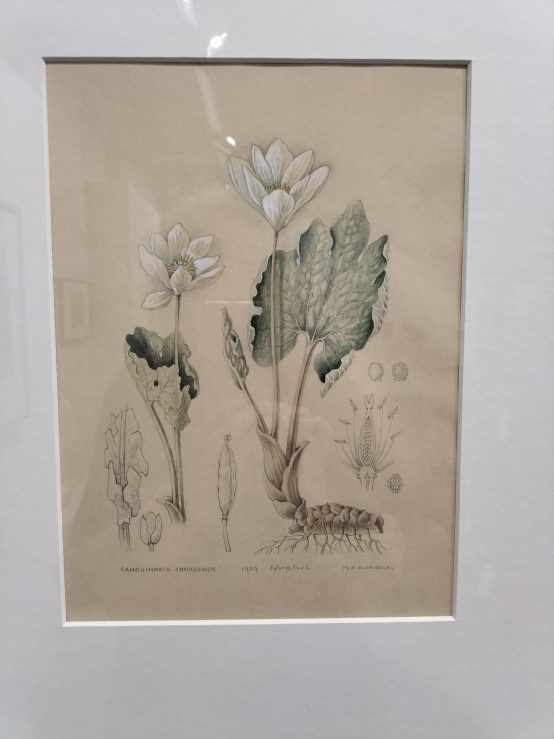
Sanguinaria canadensis by Mildred Eldridge
A second painting dated 1960 shows the delicate pastel shades of a bicoloured Camellia japonica. Mildred’s illustrations appeared in several books in the 1940s and others were published as art cards by Medici Society.
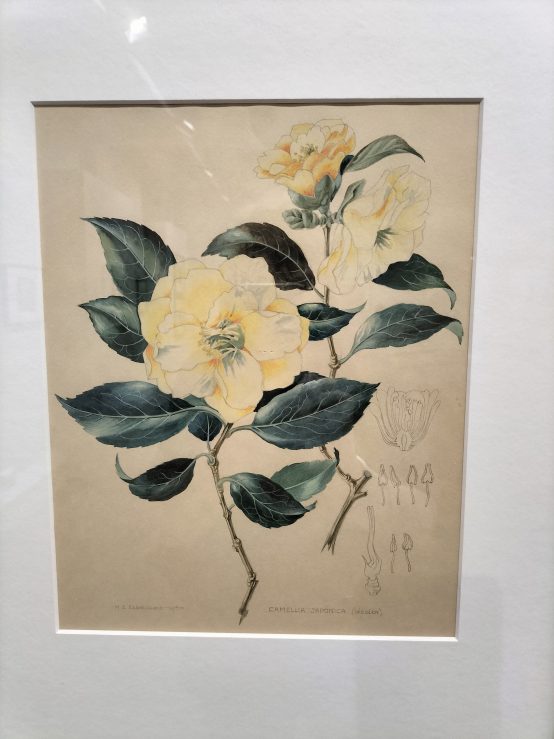
Camellia japonica by Mildred Eldridge
I was also arrested by a powerful winter scene by Belgian artist Maurice Langaskens, showing a man with secateurs mounting a ladder to prune a tree, dark birds whirling overhead. He spent much of the first world war in captivity in Germany. How did this picture find its way to Aberystwyth? Was he perhaps a friend of our better-known Belgian refugee Valerius de Sadeleer, who spent those years living at Tyn Lon, Rhydyfein, painting local landscape scenes?

An etching by Maurice Langaskens
This rummage through the archive makes serendipitous connections. Who knew that George Cruikshank had a cartoonist great nephew whose wood engraving in the magazine The Leisure Hour pokes fun at the Aesthetic Movement of the late 19th century? The tiny print shows the industrial production of serried rows of sunflowers, along with people, bees, gnats and savoy cabbages.

Woodcut by Cruikshank’s great nephew Cruikshank Jnr
Sunflowers get a grittier treatment in a lithograph by kitchen sink realist John Bratby from the 1960s.

Sunflowers II by John Bratby
Several more recent artists in the collection have close ties with Aberystwyth and I was pleased to see two of Jenny Fell’s calendar linocuts from 1989 on the walls. I am an early investor in Jenny’s work, four other months have adorned my kitchen walls since 1991. Hung here is October ( a bonfire) and April ( Violets and Primroses). The captioning has a very modern slant: burning autumn leaves now brings a homily about carbon dioxide and global warming.

October by Jenny Fell
Works by Art School staff are also to be found. Prof John Harvey’s small spikey drawing evokes the steep hill and neat gardens of Elysian Grove while Prof Catrin Webster’s huge colourful canvas dominates the room.

Elysian Grove by John Harvey
The very same evening I was at the Arts Centre for the launch of John Hedley’s exhibition in the upstairs gallery. John paints and burnishes slices of tree trunk, many of them from Bodnant or from Anthony Tavernor’s amazing garden at Plas Cadnant on Anglesey. When at his alternative home in Crete ancient olive boles provide his canvasses. The designs develop in the studio, suggested to him by the grain and form of the pieces of timber. The combined rich colours and metallic finishes of copper and gold leaf are bright and vibrant. We read a lot about mental health and well-being in relation to nature these days. This exhibition though has no subtext, it is just unapologetically cheerful.
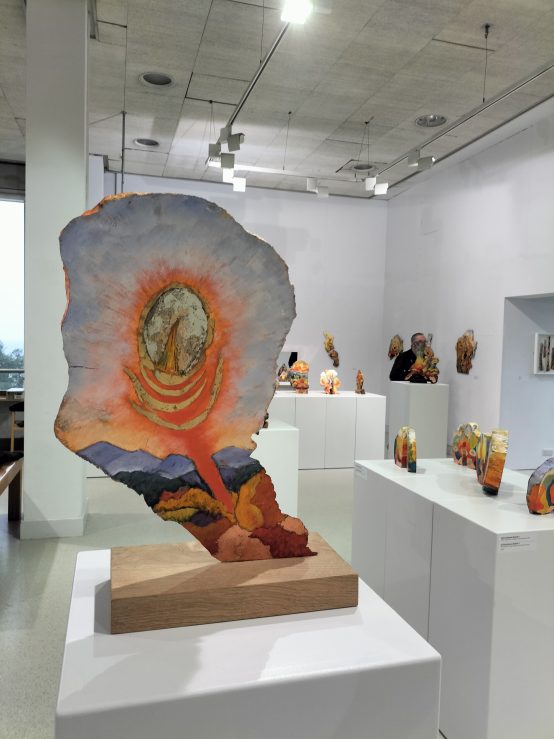
Trees trunks felled by Storm Arwen are canvasses for John Hedley
